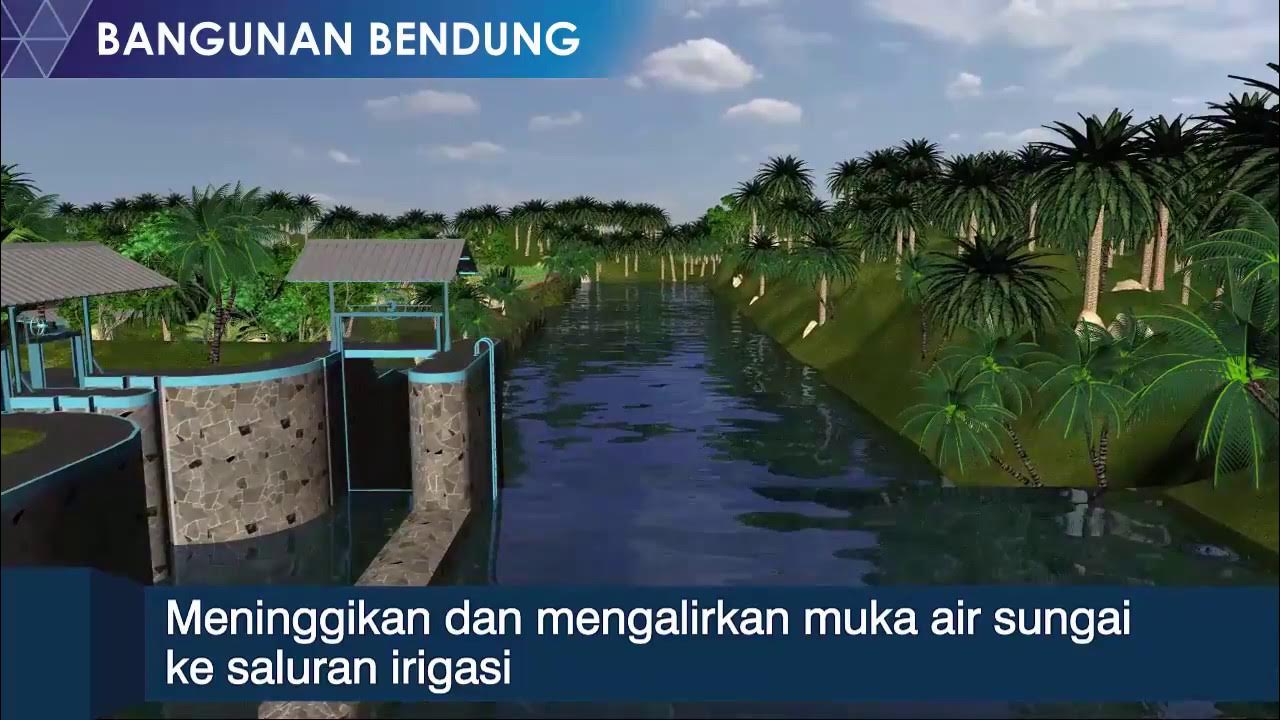Perencanaan Saluran Irigasi + Pembahasan Soal
Summary
TLDRThis script provides a detailed overview of irrigation channel planning, focusing on effective water distribution and the structures required to achieve it. It covers key elements such as intake buildings, different types of irrigation channels (primary, secondary, tertiary, and quaternary), and drainage systems. The script also delves into the technical aspects of channel design, including dimension calculations, efficiency considerations, and water requirements for crops like rice. Additionally, it discusses modular irrigation channels, loss prevention, and the importance of maintaining effective water management in agricultural systems.
Takeaways
- 😀 Effective irrigation system design ensures optimal water distribution across agricultural land.
- 🌊 Irrigation canals consist of various components such as intake, primary, secondary, tertiary, and quaternary canals for water distribution and drainage.
- 🏞️ Irrigation intake structures can be either free intake (without controlling water height) or non-free intake (involving dams or pumps).
- 💧 Water flow in open irrigation canals is driven by gravity, with water flowing due to height differences between the canal's two ends.
- 🛠️ Irrigation canals are typically designed with trapezoidal cross-sections, though square or semi-circular shapes are also used in certain cases.
- 🚰 Efficient water use is crucial in irrigation, and losses occur due to evaporation, percolation, and other factors within the system.
- 📊 The total efficiency of the irrigation system is the product of individual efficiencies at primary, secondary, and tertiary levels.
- 📏 To calculate the required flow (debit rencana) for irrigation, the net water requirement (NWR) of crops like rice is essential.
- 🔧 Modular irrigation channels, made from precast concrete sections, help minimize water loss and improve construction speed and quality control.
- ⚙️ The design of irrigation canals should include considerations for both the expected flow rate and the slope to achieve desired water velocities.
- 💡 The proper dimensioning of canals is vital, with factors such as channel shape, material, and local terrain influencing the design for effective water conveyance.
Q & A
What is the primary function of an irrigation canal system?
-The primary function of an irrigation canal system is to effectively distribute water from a water source (e.g., river or reservoir) to agricultural fields, ensuring crops receive the required water for optimal growth.
What types of intake structures are used in irrigation systems?
-Irrigation systems use two main types of intake structures: free intake structures, which draw water without controlling the water level, and non-free intake structures, which regulate the water height, typically through weirs or dams.
How are irrigation channels classified based on their functions?
-Irrigation channels are classified into primary, secondary, tertiary, and quaternary channels. Primary channels bring water from the intake to secondary channels, secondary channels distribute water to tertiary channels, and tertiary channels deliver water to individual plots. Quaternary channels serve localized areas within tertiary plots.
What are the main types of drainage channels in irrigation systems?
-The drainage system consists of tertiary drains (smallest, within individual plots), secondary drains (collecting water from multiple plots), and primary drains (removing water from larger areas and returning it to natural bodies like rivers).
How is the water requirement for irrigation calculated?
-Water requirements for irrigation are calculated using the formula: Q = nfr × a × eh, where nfr is the net water requirement for crops, a is the area to be irrigated, and eh is the overall irrigation efficiency.
What factors contribute to water losses in an irrigation system?
-Water losses in irrigation systems are caused by evaporation, seepage, and percolation. These losses vary across different parts of the irrigation network, with tertiary channels experiencing losses of 15-22%, secondary channels 7.5-12%, and primary channels 7.5-12.5%.
What are the advantages of modular concrete irrigation channels?
-Modular concrete irrigation channels are quick to install, durable, and leak-resistant. They help reduce water losses and maintenance costs, and they are more aesthetically pleasing and efficient compared to traditional stone or earthen channels.
How do you calculate the flow rate in an irrigation channel?
-The flow rate (Q) in an irrigation channel can be calculated using the formula Q = P × A, where P is the average flow velocity and A is the cross-sectional area of the channel.
What is Manning’s equation used for in irrigation system design?
-Manning's equation is used to calculate the velocity of water flow in an open channel. The equation is V = (1/n) × R^(2/3) × S^(1/2), where n is the roughness coefficient, R is the hydraulic radius, and S is the slope of the channel.
What is the significance of designing channels with trapezoidal cross-sections?
-Trapezoidal cross-sections are commonly used in irrigation channels because they provide better stability for the channel slopes. This design helps prevent erosion and ensures the water flows smoothly without significant loss.
Outlines

This section is available to paid users only. Please upgrade to access this part.
Upgrade NowMindmap

This section is available to paid users only. Please upgrade to access this part.
Upgrade NowKeywords

This section is available to paid users only. Please upgrade to access this part.
Upgrade NowHighlights

This section is available to paid users only. Please upgrade to access this part.
Upgrade NowTranscripts

This section is available to paid users only. Please upgrade to access this part.
Upgrade Now5.0 / 5 (0 votes)





